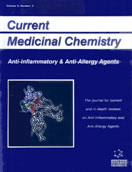Abstract
The novel “induced self” recognition mode mediated by the immunoreceptor NKG2D allows NK cells to eliminate dangerous and dysfunctional cells. Long-puzzling, complex NK cell reactivity patterns can now be explained - at least in part - by the combined action of the molecular players of the “missing self” and “induced self” hypotheses. Accordingly, MHC class I down-regulation in concert with an upregulated expression of self-ligands of activating NK receptors renders cells susceptible for NK cytotoxicity. The C-type lectin-like, activating NK receptor NKG2D detects a variety of inducibly expressed MHC class I-related molecules on stressed, infected, or malignant cells, and subsequently triggers effector functions of NK cells. Recent experiments also underline an important function of NKG2D on CD8 αβ T cells in tumor immunosurveillance and in the pathogenesis of autoimmune diseases. Here, we review the current knowledge on NKG2D and its ligands (NKG2DL) with regard to their structure, expression, and function, refer to recent data on the involvement of NKG2D in anti-viral immune defence, tumor surveillance, and autoimmune phenomena, and outline emerging evidence on the modulation of NKG2D by cytokines and soluble NKG2DL.
Keywords: nkg2d, mica/b, ulbp, nk cell, ul16, cytokines, autoimmunity
 2
2

